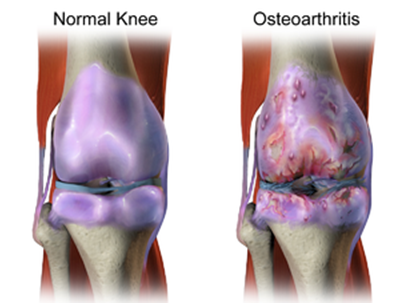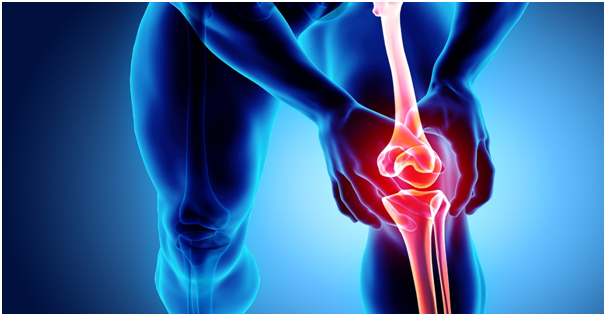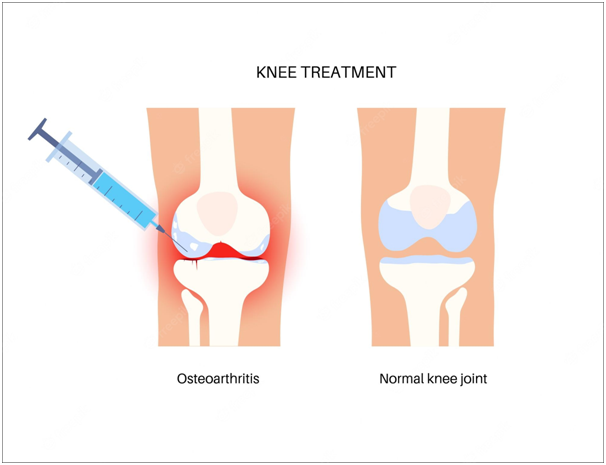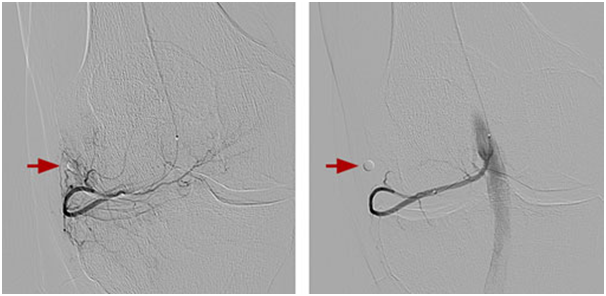| Category | Joint & Soft Tissue Injections |
There are many causes of knee pain, common causes are:
Osteoarthritis of the knee is a widespread cause of knee pain in old age. It is one of the most typical causes of knee pain in India.
Apart from joint replacement, there are few non-operative knee pain treatments option.



Osteoarthritis is the commonest cause of knee pain. Osteoarthritis is one of the commonest joint problems with 80% of the general population of radiologic evidence of osteoarthritis by 65 years of age. The disease process starts by age of around 30 years and manifests around 40 years.
Chemical stress on articular cartilage and subchondral bone lead to wear and tear to these structures.
Pain around the joint that increases with weight-bearing and movement and improves with rest is the commonest presenting symptom. Also, it may be associated with morning stiffness and swelling of the joints. Clinical signs are tenderness, crepitus, joint effusion, decreased range of movement, valgus/varus deformity, etc. Along with this, X-ray shows decreased joint space, osteophyte formation, and osteoporosis of subchondral bone.
Paracetamol /Acetaminophen is used as the first line of therapy
Those who do not get adequate relief with oral paracetamol should take weak opioids like tramadol, codeine, or dextropropoxyphene along with Paracetamol. There are several combinations of Paracetamol with opioids that are used for a prolonged period without significant side effects.
The next line of therapy is NSAIDs. Ibuprofen 1200 mg to 2400 mg/day is the first line NSAID. If the relief is not adequate, paracetamol is added up to 4 g along with ibuprofen. These medicines are not used for a prolonged period.
Patients with severe pain in the knee, joint effusions, and local signs of inflammation benefit from intraarticular injections of corticosteroids. This will be effective for a short-term period in reducing pain and increasing quadriceps strength. Some patients will require about 2 to 3 injections in a year. Repeated steroid injections are not recommended for the fear of damaging the cartilage of weight-bearing joints.
High molecular weight hyaluronic acid resembling synovial fluid is very helpful particularly in early osteoarthritis with knee pain. Newer research publications on this issue indicate that visco-supplementation with a high molecular weight hyaluronic acid salt has anti-inflammatory action and regeneration properties apart from its lubrication effects. It also activates platelets and therefore it is very commonly used with platelet-rich plasma injection.
Like its usefulness in other degenerative diseases, it is useful in osteoarthritis of the knee also. It is becoming popular throughout the world. This treatment is also called regeneration therapy of the knee as it regenerates the degenerated knee and significantly reduces knee pain. A combination of PRP and hyaluronic acid salt is a very popular treatment for knee pain in knee osteoarthritis.
Platelet-rich plasma is a form of regenerative medicine. It uses injections of your own blood platelets to help with healing.
Platelets, or thrombocytes, are a type of blood cell. Their main function is clotting blood. They’re produced in your bone marrow. Platelets contain growth factors. These are proteins that may be helpful in healing injuries.
A healthcare professional will collect a small amount of your blood (approx. 15-20 ml only). They will place your blood into a centrifuge. This spins your blood at different speeds until it separates into different layers. One layer is the platelet-rich plasma. This layer of plasma may have as much as three-four times more platelets than regular blood.
The platelet-rich plasma will then be injected into your affected area. We will first numb the area with a local anesthetic. The pain at the site may increase for the first 1-2 days. It could take 1 week before you feel any improvement.
Avoid taking non-steroidal anti-inflammatory medications ( NSAIDs) after your treatment as this may block the effect
Avoid activities that put stress on the area of treatment for a few days
The effectiveness of platelet-rich plasma treatment depends on several factors, including:
Many clinical trials have supported its use.
Some studies have found that platelet-rich plasma injections significantly reduced pain compared to placebos. People’s physical function also improved significantly. These benefits continued at 3, 6, and 12-month follow-ups.
There’s no chance of an allergy or immune reaction to platelet-rich plasma treatment because the plasma is taken from your own blood. Side effects and complications are rare
The doctor will clean the area over the joint and insert a small needle into the fluid-filled area around the joint bones under imaging guidance. When it is in the correct position, they will inject the PRP into the joint. They will remove the needle and cover the injection site with a small dressing.
Occasionally it is difficult to inject much medicine into the joint space, especially if the joint is extremely swollen. If this is the case, other medicines may be prescribed to reduce the swelling before the injections are tried again.
We have a very fast and competent working team (Consultant, fellow, clinical assistant, technician, and ward assistant) which provides you with a comfortable atmosphere and eases your nerves. The usual time of stay is around a few hours.
Every procedure carries a risk, although this is extremely small. The risk of infection with this procedure is extremely small as no incisions are made in the skin.
You can resume your work after 1 day if the existing disease allows.
Genicular artery embolization (GAE), or embolization of the knee, is a novel minimally-invasive procedure providing immediate and long term pain relief for patients with osteoarthritis (OA), by reducing the blood flow to the lining of the knee, known as the synovium. It is performed by an Interventional Radiologist (IR), who is a specialist physician that uses X-rays and other imaging modalities to see in the body and treat diseases without surgery.
GAE blocks the blood flow to the lining of the knee, known as synovium, that are inflamed. By blocking these arteries, there is a reduction in the amount of inflammation associated with osteoarthritis, a process that can help or eliminate the associated knee pain.
GAE is performed with moderate ‘twilight’ sedation as an outpatient procedure, meaning the patient will go home after the procedure. The procedure generally takes one to two hours. Our IR physicians will insert a small catheter (a thin hollow tube) into the artery of the patient’s upper thigh and, with the use of X-rays, guide the catheter to the arteries supplying the lining of the knee. Tiny particles are then injected through the catheter into these arteries, reducing the blood supply. This in turn reduces the inflammation associated with osteoarthritis, which alleviates the Pain.

(Initial (left) and final (right) angiograms of the knee after embolization. A circular marker was placed at the site of pain. The reduced blood-flow at the site of pain after embolization reduced inflammation of the knees)
Patients go home the same and in most cases, relief begins to occur in two weeks, as the inflammation in the lining of the knee is reduced, relieving the knee pain associated with osteoarthritis.
GAE is a non-surgical treatment alternative for patients with knee pain due to osteoarthritis who have failed conservative therapy, such as anti-inflammatory medications or knee injections, and who do not wish to undergo or are ineligible for knee replacement surgery.
We have very fast and competent working team (Consultant, fellow, clinical assistant, technician and ward assistant) which provide you comfortable atmosphere and ease your nerves. Usual time of stay is around 1 Day.
Mild pain may occur after the procedure, for which analgesics will be given.
You can resume your work after 2-3 days if existing disease allows.